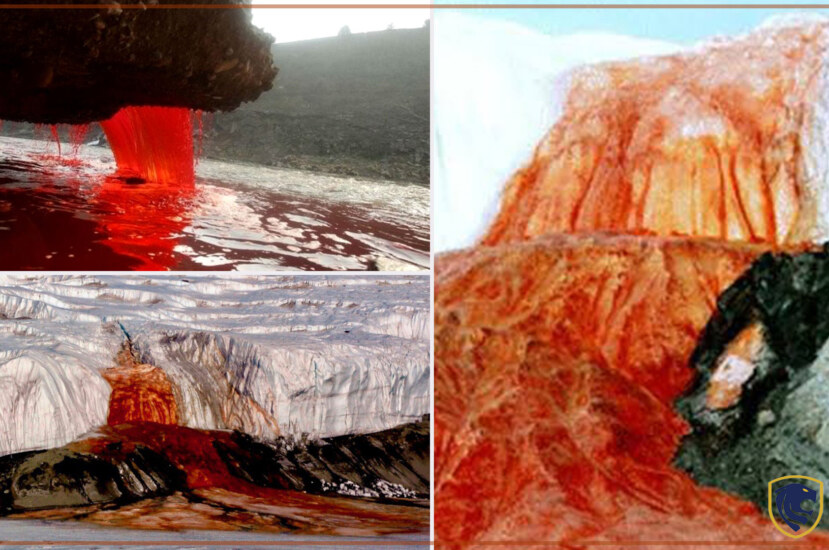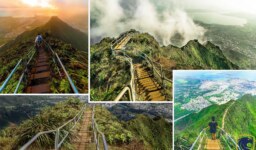When we think about waterfalls we naturally drive our minds into a jungle with green everywhere. We imagine a waterfall which is gushing water forming pearly drops and snowy foam. Those can offer us a relaxing sensation with the magical sound harmonized with the chirping of birds nearby. The biggest waterfalls in the world are Angel Falls, Venezuela, Victoria Falls, Zimbabwe, and Zambia, Iguazu Falls, Brazil, and Argentina., Niagara Falls, USA, and Canada., Sutherland Falls, New Zealand. The most visited waterfall in the world in Niagara falls. Over 8 million tourists pay a visit to the Niagara falls annually.
So, there is no doubt that any waterfall can attract tourists. Water falls can create breath-taking and eye-catching scenarios. But today we are going to explore about a waterfall which has totally different characteristics. This waterfall is not in a middle of a greenish jungle but amidst pure white snow. Moreover, it is not containing blue water with really drops or snowy foam, but a gushing stream of blood. This waterfall has given the whole area a creepy look. It seems like that this part of the world has elevated from the hell. This mysterious waterfall is non other that the blood falls in Antarctica. In this article we are going to explore about this amazing creation of nature and the secrets behind the red blood flow in this waterfall.
Location of the blood fall
The blood falls, which has originated from Taylor Glacier is situated McMurdo Dry Valleys in Antarctica. It releases water that rises up through the cracks in the glacier’s surface. The average temperature in this area is 1.4 degrees Fahrenheit (-17 degrees Celsius). Moreover, little glacier melting is visible at the surface. Due to that fact this waterfall was previously a big mystery. In 1911, scientists made the initial discovery of this unusual phenomenon—a frozen red waterfall. Scientists had observed a section of the cliff which had developed an unexplained crimson stain. They then assumed that the presence of algae was the cause of the water’s discoloration. However, there was no evidence to support this.
The Blood Fall is distinctive not only for their color, but also for the fact that the world’s coldest glacier, which sustains continuously running water contains iron, is located there. Since the glacier can be seen melting at the cliff’s edge despite the normal temperature being -17 degrees Celsius, the falls have long been a puzzle. Despite of all the mysterious secrets this waterfall has been famous among many people due to the unique color it has.

Blood waterfall in Antarctica
Secret behind the blood
After conducting researches for years scientists have been able to discover the secret behind this extraordinary creation of nature. An ancient colony of bacteria and a tiny amount of water both reside beneath the Taylor Glacier, which has been able to seal it around two million years ago. To date, these bacteria have been cut off from their environment by being encased in a thick coating of ice. These bacteria live and develop in environments with no interaction with the outside world. And get nearly no heat, oxygen, or light.
The iron-rich, highly salinized imprisoned lake combines with the oxygen outside to give the cascade its distinctive red color. In essence, the same process gives iron its black color as it rusts.
A complex network of iron-rich subglacial rivers and a subglacial lake can be found under the glacier. Since salt water has a lower freezing point and loses heat when it freezes. The lake beneath the glacier is also particularly salty, which melts the ice and causes the river to flow over it. The amount of salt likewise rises as one approaches the falls.
A crack in the glacier allows this subglacial lake to exit, creating the falls without harming or polluting the environment inside. Because of fractures and channels in the glacier, this salty water takes approximately 1.5 million years to reach Blood Falls.
The technology used to discover the mystery behind blood waterfall.
Radio-echo sounds was utilized to transect the glacier in a grid in order to comprehend the characteristics underneath the glacier as part of the technologies required to solve this enigma. To solve the riddle of the falls, a radar was employed to examine the ice from which the water gushes. The existence of these subglacial settings on other planets raises the question of whether life is in fact conceivable elsewhere as well. Because these bacteria have evolved in a different environment which is almost like another world. The environment that these bacteria was dwelling has been seald for million of years. So there can be other planets that contain such bacteria which can live without light, heat or oxygen.

Blood waterfall in Antarctica
The specialty of this waterfall is not only that this is red in color. But also this is the only red waterfall in this world. There are only few places that contain different colors of waters. But they are only lakes full of different colors of water. For instance, rose lake in Michigan, red water lake in Ontario, Yellow Lake in Wisconsin, The Grand Prismatic Spring in Yellowstone National Park ,Chott el Djerid, Tunisia and many more. Most of these lakes contains different colors of water due to algae. Furthermore, most of them are located near active or dead volcanos. Due to that the waters have different salt levels. Most of the times they contain waters with high salinity.
How to reach Blood falls
If you ever have thought of paying a visit to blood falls in Antarctica, you ought to take a rough journey. As Antarctica is not a popular tourist destination, there are no flights you can take. Only a helicopter from the US, New Zealand, or a cruise liner in the Ross Sea can transport people to the Dry Valleys. There you can see this creepy but ravishing beauty of Blood falls in Antarctica.
So, what do you think about this creepy but beautiful creation of mother nature? Do you have any plan to visit this place taking the long journey? Don’t forget to let me know your thoughts in the comment section.




